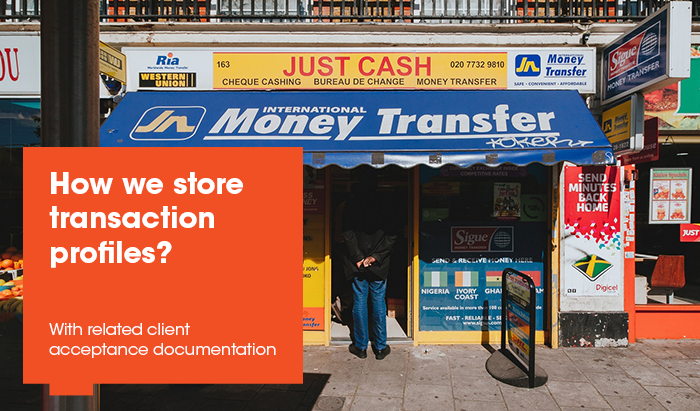“Combating terrorist financing is and remains an important focal point of our integrity supervision. Our examinations have revealed that many supervised institutions still insufficiently control the risk of becoming involved in terrorist financing.”
DNB – 25 January 2017
Getting it right from the start
As we know, compliance programs depend on accurate and timely information: the sooner you realise there is a problem, the greater the likelihood that you’ll be able to properly investigate and resolve it (or report your findings to the relevant authority). Staying informed and in control of the money flowing through your accounts by monitoring of transactions is vital to a robust compliance program.

DNB and other supervisors have said repeatedly that good transaction monitoring is one of the foundations of good AML practice.
“Practical evidence shows that analysing transactions delivers relevant indicators that enable detection of terrorist financing.”
At its foundation, good transaction monitoring starts with creating a proper overview of your organisation, your client and their activities via a transaction profile.
So, what should the ideal transaction profile look like?
Profiles provide an easy way to identify unusual activity. As soon as something out of the ordinary occurs, it sends up a red flag. And it stands to reason that the more detailed your profile and the more parameters that are set, the better chance you have of identifying and investigating anomalies.
DNB cited good transaction profiles as one of their six ‘best practices’ in a set of guidelines released at the end of 2016, describing the ideal attributes that profiles should have:
- Current: the transaction profile is up-to-date and includes a date. All (relevant) amendments to be processed on time.
- Complete: all bank account numbers, the names of beneficiaries and payment authorised and all relevant activities are included.
- Specific: the expected items / money flows are clearly described (including the amounts which will be paid and the frequency). Payment limits are established and can contribute to the identification of unusual transactions.
- Clear: profiles should be clear and easy to understand. For example, using diagrams can make the representation of cash flows much clearer.
- Substantiated: the transaction profile is supported with relevant documents which illustrate and explain the anticipated transactions (even further).
- Captured: the transaction profile is stored in the client (acceptance) record.
We’ve got it covered
Even before DNB came out with the above recommendations, we had already put a lot of work into making sure that our transaction profiles would provide the kind of strong foundation our customers need.
The profiles we use are comprehensive, allowing users to define the key parameters: regularity of payments, the minimum or maximum amount and counterparty account details. Profiles are linked to the client acceptance files, with integrated document management to allow the addition of substantiating documentation.
We also allow for additional information such as Corruption Perception Index (CPI) number to be included in the transaction profile. This information provides a useful indication of potential AML risks by identifying transactions which come from countries where the legal system is weaker and the perception of bribery and corruption is substantial.

Start with transaction profiles and transaction monitoring
Why not see how transaction profiling and transaction monitoring can help you easily take control of your compliance obligations? Not only can we help to reduce the risk of non-compliance costs, but our solution also offers an opportunity to gain valuable business insights that can be used to support management decisions and support strategic planning.









